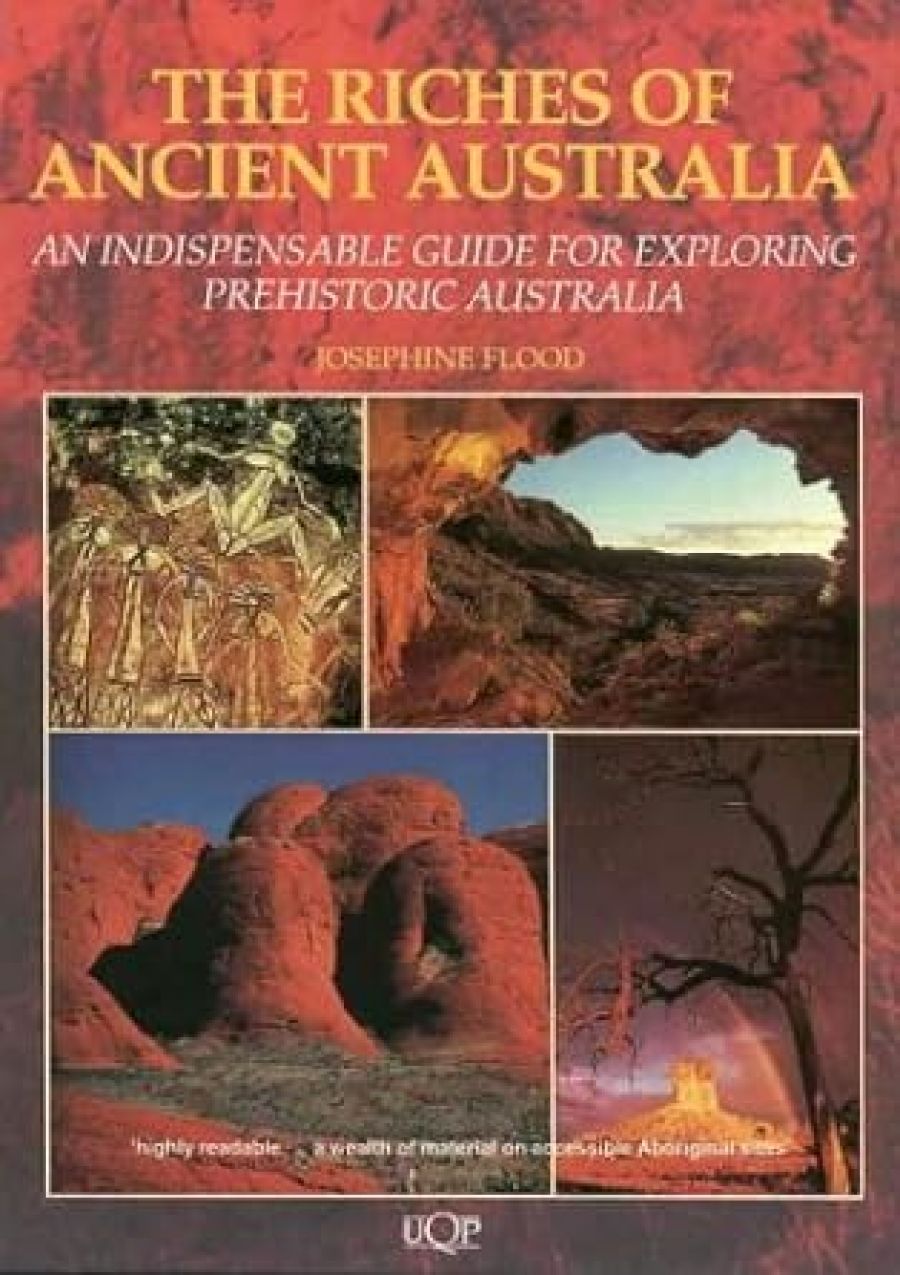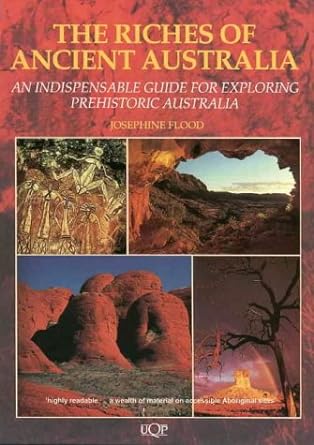
- Free Article: No
- Contents Category: Australian History
- Review Article: Yes
- Article Title: Ancient Wonders
- Online Only: No
- Custom Highlight Text:
Last year I took my twelve-year-old daughter to see Lake Mungo. We talked all morning about ancient lakes and Aboriginal camp sites but looking at the saltbush she could not make the jump. Standing on the lunette, her keen eyes picked out a tiny crenulated piece of bone amongst the drift sand. Less than ten millimetres long it was a fish otolith, part of the bony structure of the inner ear, its shape characteristic of golden perch. Puzzled she looked around at the dry plain and started to ask, ‘How did a fish get way out here?’. Watching her eyes, I saw the flash of understanding: an ancient lake full of water snapped into focus. The tiny otolith was tangible evidence of past environments no book could match. But to grasp the past imaginatively and intellectually you need to visit the sites and learn to read the landscapes. This is part of the reason I like the latest edition of The Riches of Ancient Australia, Josephine Flood’s field guide to prehistoric Australia. It encourages people to get out and look around.
- Book 1 Title: The Riches of Ancient Australia
- Book 1 Subtitle: An indispensable guide for exploring prehistoric Australia
- Book 1 Biblio: University of Queensland Press, $39.95 pb, 382 pp
- Book 1 Cover Small (400 x 600):

Flood draws on the Register of the National Estate to compile a visitor’s guide to archaeological sites throughout Australia. The strongest feature of the book is its continent-wide coverage with information on more than two hundred places ranging from shell middens and rock art sites to fish traps, wells, caves and rock shelters. Think of it as a sort of Lonely Planet guide to prehistoric Australia but do not expect an encyclopaedia or gazetteer of sites. Flood chose to exclude historical sites. This is a pity because her inclusion of geological or fossil sites (e.g. dinosaur tracks at Lark quarry QLD; Wolfe Creek meteorite crater WA) and frequent use of arcane technical language (‘hominids’, ‘occupation deposit’, ‘Pleistocene’) make the book seem more about a primordial past than about Aboriginal history. A scattering of Aboriginal myths and traditions through the text does little to relieve this. And yet the majority of the archaeological sites in the book relate to the last few hundred years, providing a richly detailed chronicle of Aboriginal history and changes in Aboriginal society since about 1500 CE.
There are some surprising omissions and occasional factual errors. Some major sites, mentioned in the text, lack a site entry: the well-known rock engravings at Panaramitee and Karolta, and the Cuddies Springs site where the bones of extinct giant marsupials intermingle with the remains of Aboriginal camp debris are not listed. It was news to me that I had re-excavated Malangangerr and I was dismayed to see the popular misconception, that central Australia had ‘freshwater lakes teeming with fish and other creatures’ during the last ice-age, recycled yet again. The Riches of Ancient Australia is primarily a visitor guide written to fill growing interest in cultural tourism in this area. It does this very well but rely on it as a reference work with caution.
Guides to archaeological sites are written to a well-tried formula: a potted history, followed by a summary of the types of sites one can expect to see, followed by a brief listing of sites in each region together with some perfunctory details on access. Visiting Britain in the mid-1980s I picked up the current Collins field guide only to find a quaintly archaic text that seemed trapped in the 1930s. In contrast The Riches of Ancient Australia has been regularly updated. Flood and UQP are to be commended for this. The book begins with three general chapters that provide background sketches of Australian geology and prehistory, Australian rock art, and the main types of archaeological sites. The main part of the book is organised by region and contains an annotated list of sites in each area and how to get to them. There is a useful list of contact addresses for people needing further information or permits to visit sites. The best guides provide sufficient background for a visitor to fit a site into the historical narrative, or see how it might exemplify a particular time period or type of site. The Riches of Ancient Australia does not do this at all well and readers will need to supplement the book with other sources.
The Riches of Ancient Australia is at its best where the entries directly relate the physical features of a site to its history. In 1964, Najombolmi, an Aboriginal artist, camped in one of the rock shelters at Nourlangie Rock – In what is now Kakadu National Park. Concerned about the depopulation of his country he painted people back into it in a large panel of rock paintings showing two family groups, with the women shown with milk in their breasts ready to people the land again. Flood shows how Najombolmi’s beautiful painting can be decoded. This is a good example of what these guides can do and where the visitor has a fighting chance of connecting place and history, site and story.


Comments powered by CComment